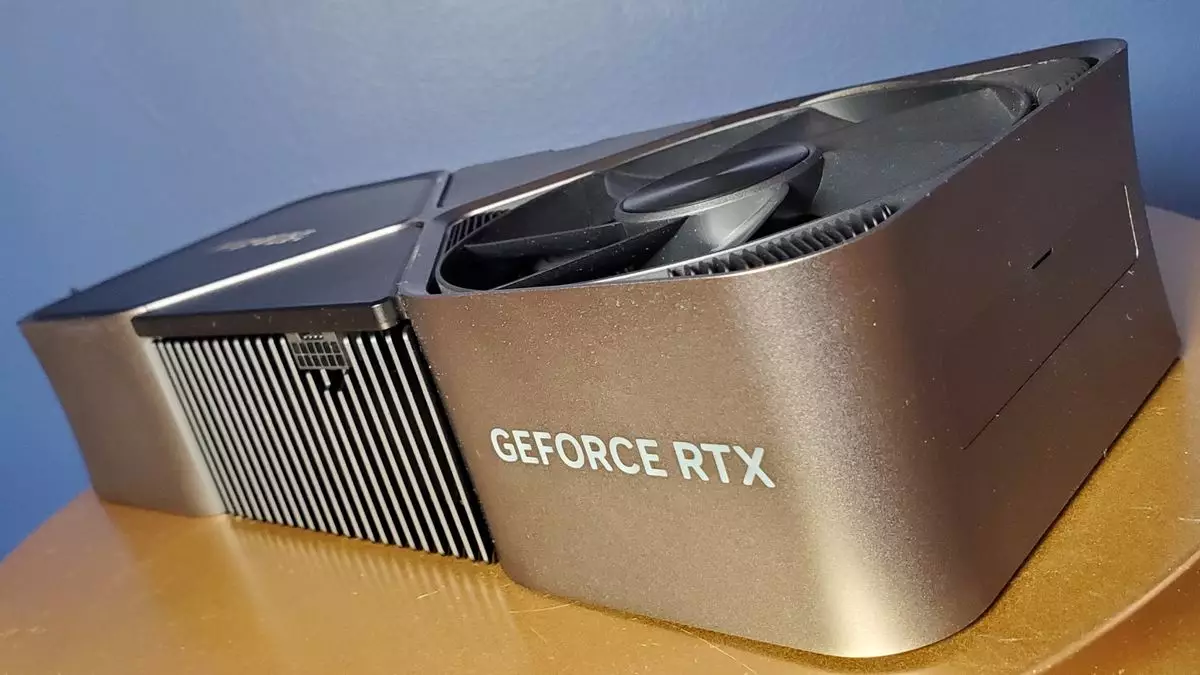The world of graphics processing units (GPUs) has witnessed extraordinary advancements in recent years, particularly in terms of power consumption and performance output. Nvidia’s upcoming RTX 5090 is reportedly poised to redefine these parameters, boasting a thermal design power (TDP) of 575 watts. As leakers from the tech community, including hongxing2020 and kopite7kimi, unveil these figures on social media platforms, it becomes necessary to delve deeper into the implications of these developments.
The reported TDP of 575W for the RTX 5090 signifies one of the most power-hungry mainstream graphics cards to date. To put this in perspective, the RTX 4090, which was already considered a heavyweight at 450W, is facing a staggering 125W increase, reflecting a power inflation of almost 30%. Such metrics raise eyebrows, particularly among gamers and PC builders who must meticulously plan their hardware configurations.
What elevates efforts to predict true performance levels is the reported inclusion of 21,600 CUDA cores in the RTX 5090, marking another significant performance leap of around 30% compared to the 4090’s 16,000 cores. This growth illustrates Nvidia’s unwavering commitment to enhancing processing power, yet it also invites essential conversations about system requirements and thermal management as graphics cards evolve.
Thermal management becomes even more critical with the 5090’s remarkable power requisites. The balance between raw performance and efficient power consumption remains a crucial aspect of GPU development. Nvidia’s shift to GDDR7 memory—less power-intensive compared to the GDDR6X employed in the previous 40 series—offers a glimpse of how manufacturers are striving to manage energy draw while still pushing the boundaries of performance. However, the uptick in TDP still necessitates a more robust power supply, as older units may no longer suffice under the strain of such demanding hardware.
System builders must also consider the entire ecosystem that surrounds their components. The advent of the Corsair power supply unit (PSU) line, tailored for next-generation graphics cards, suggests manufacturers recognize this crucial need. With standards such as the 12VHPWR connector causing issues in earlier iterations, it appears that manufacturers are focused on ensuring reliability and stability, reflecting consistent improvements post-launch.
The upcoming architecture change hints at broader ramifications for gaming and PC building. As hardware becomes more demanding, enthusiasts must adapt to ensure their systems can handle the influx of power and performance. Serious gamers might find themselves compelled to evaluate their current PSU, cooling solutions, and potentially even their cases to accommodate the increased size and power requirements of new GPUs.
Moreover, the shift toward higher-powered components invites a broader question about the sustainability of such rapid advancements in technology. As power consumption rises, so too does the overarching environmental impact. Will manufacturers tackle the challenge of delivering high-performance components while meeting green technology standards? Nvidia’s forthcoming products will surely set the stage for industry-wide discussions on the balance between performance and sustainability.
A Future of Gaming: Anticipations and Concerns
Looking ahead to CES 2025 and beyond, Nvidia’s announcements regarding the RTX 5090 will dominate the conversations in tech spaces. With significant jumps in TDP and core counts, the anticipation for performance metrics will be palpable. Yet, potential buyers should remain cautious. An environment where consumers must frequently upgrade their PSUs, cases, and cooling solutions may lead to dissatisfaction among those with budget constraints.
While the Nvidia RTX 5090 promises to be a powerhouse card with impressive specifications, the discussions surrounding its power draw necessitate thoughtful consideration of broader gaming and building dynamics. Gamers and tech aficionados would do well to examine not just the cards themselves, but also the ecosystem and lifestyles that these technological marvels fundamentally alter.

